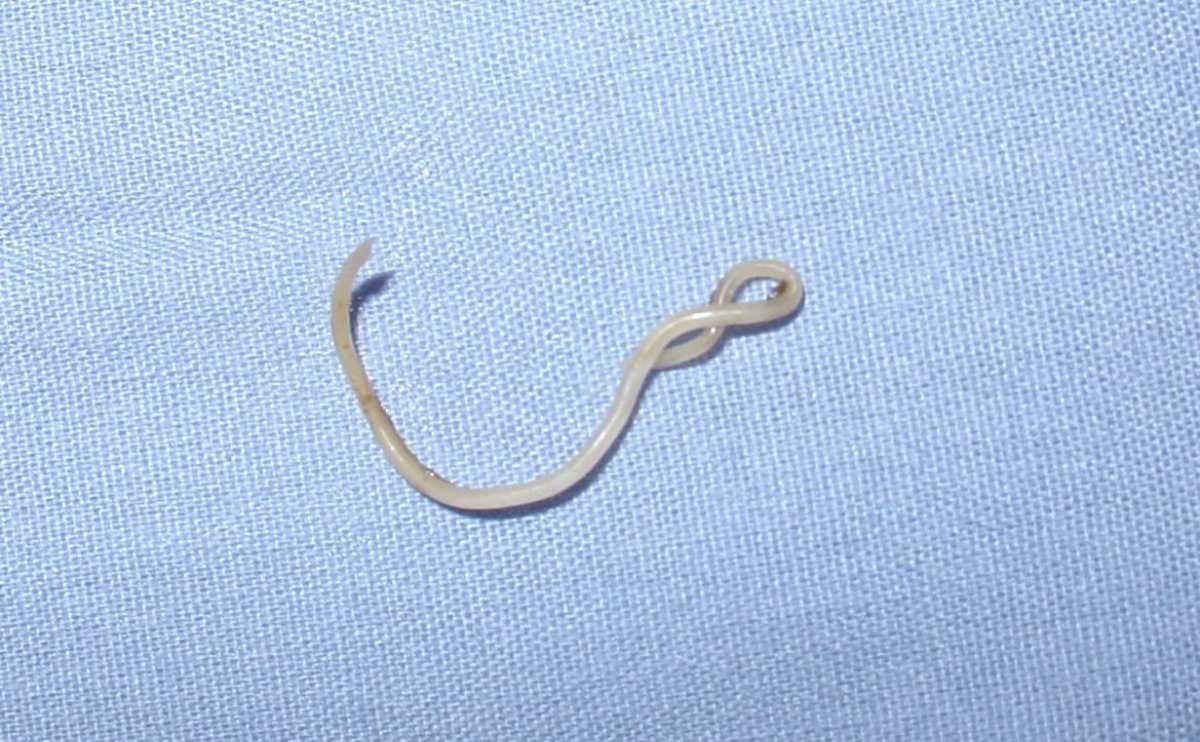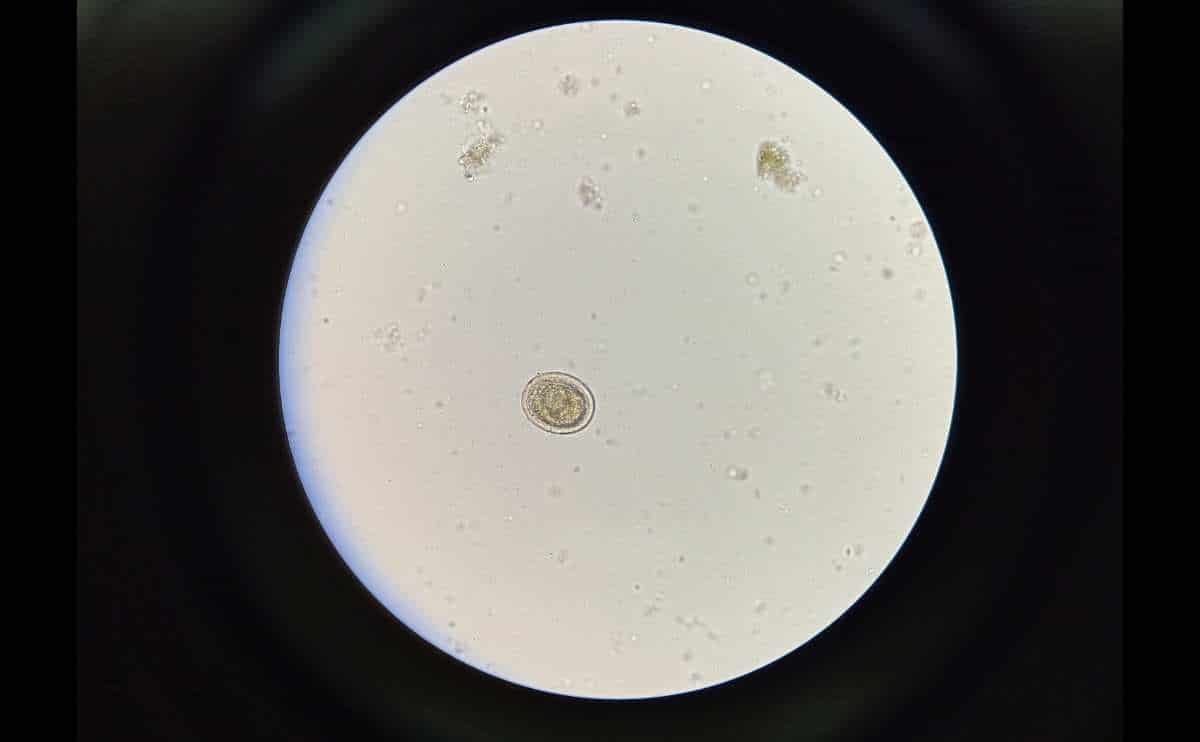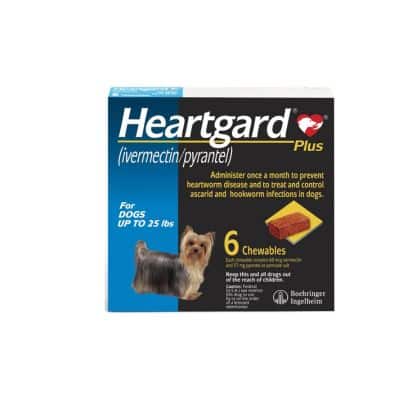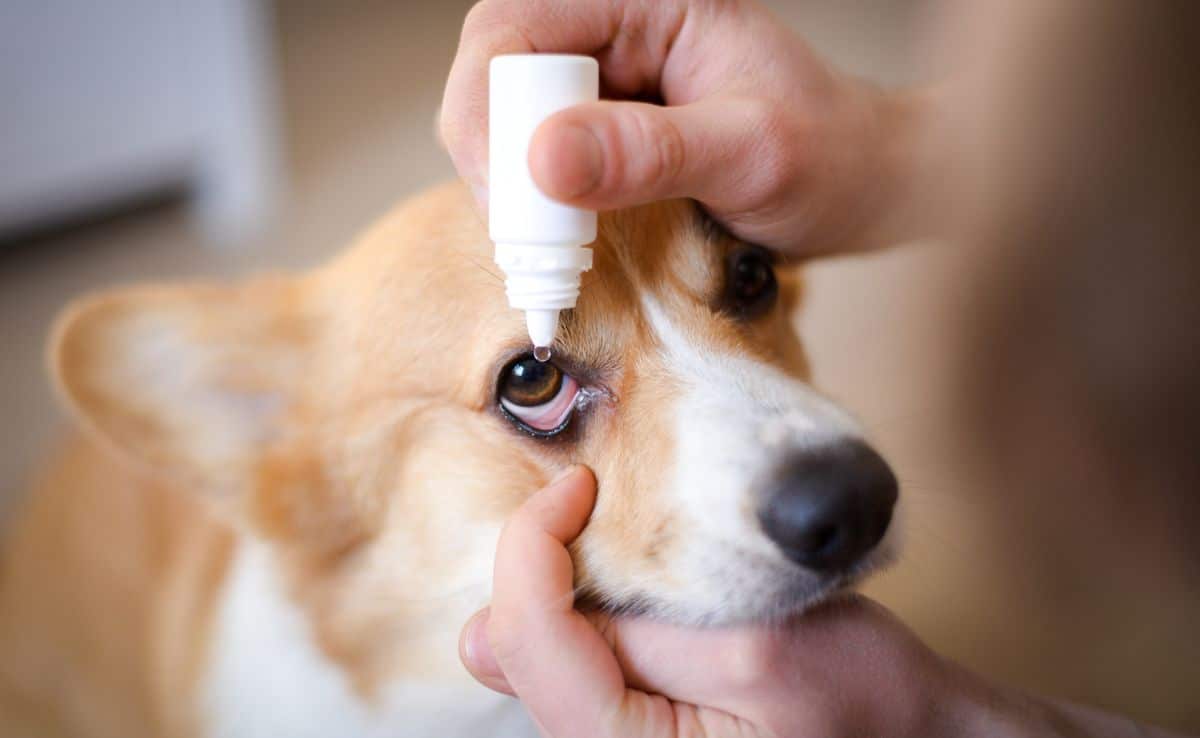Roundworms In Dogs: Symptoms, Treatment & Prevention
When you purchase through links on our site, we may earn a commission. Here’s how it works.

Roundworms are the most common worms in dogs, and many young puppies get infected. Although routine deworming can prevent serious problems, it’s important to know how to spot the signs of a roundworm infestation in your pup. Left untreated, puppies and even some adult dogs can become very ill.
Table of Contents
What Are Roundworms?
Roundworms are tubular-shaped, pale-colored intestinal parasites that affect almost all dogs at some point, particularly in puppyhood. There are 2 main species of roundworms in dogs: Toxocara canis and Toxascaris leonine. Toxocara canis can cause more significant health problems, can be transmitted to humans, and can grow up to several inches long. In humans, roundworms are referred to by the scientific name Ascaris lumbricoides. Though most often found in humans, A. lumbricoides can infect dogs if they eat the eggs.
Roundworm Life Cycle
The life cycle of a roundworm directly involves dogs or other animals. The parasite is passed through eggs being excreted in a dog’s feces. These eggs get into the environment and pass to other animals, where they mature into adult worms.
- If a dog swallows roundworm eggs, the eggs will hatch and release the larvae, which can now cause an infection.
- Roundworm larvae penetrate the intestines. These larvae can pass through the lungs into the windpipe in puppies and younger pups. In older dogs, roundworm larvae often form cysts in the intestinal tissue.
- Larvae are swallowed, go back to the dog’s intestines, and mature into adult worms. Mature female worms lay eggs, and the cycle continues.
- Roundworm larvae that have burrowed into cysts can be reactivated when a dog gets pregnant. These larvae can infect puppies through the placenta and a mother dog’s milk.
- Puppies can pass the eggs as well, releasing more into the environment. Other small animals like rabbits, squirrels, mice, cats, raccoons, and birds can eat roundworm-infected animals, allowing the cycle to continue. Puppies are a common source of roundworms getting into the environment.
What Age Dogs Are Most At Risk For Roundworms?
Dogs Of Any Age Can Be Affected
Most dogs will have roundworms at least once in their lives, mainly because it is often passed from a mother dog to her pups before they are even born. Roundworms affect puppies more than adult dogs.
But Puppies Are More Susceptible
Young puppies are most susceptible to health threats from roundworms because their immune systems aren’t mature enough to fight them off. The worms feed off of partially digested food in the intestinal tract, and if there are a large number of roundworms, they can rob a puppy of vital nutrients and cause stunted growth.
How Do Dogs Get Roundworms?
There are several ways dogs get roundworms.
1. From The Mother Dog
Roundworm larvae can migrate from the intestine and become enclosed cysts in the body’s tissue. If this happens in pregnant dogs, the encysted larvae can cross through the placenta into an unborn puppy. The larvae can also migrate to the mother’s mammary glands and pass to puppies through milk.
2. From The Environment
While in the intestine, adult roundworms shed eggs that pass into the environment through an infected dog’s feces. Other dogs can become infected by sniffing or licking infected feces or soil, plants, or other objects that have been contaminated by infected feces.
3. From Eating Contaminated Animals
Several small animals, such as rodents, birds, earthworms, and some insects, can act as carriers for roundworm eggs. These animals aren’t the roundworm’s normal host, so the eggs never mature in them. But if your dog eats these “transport hosts,” the eggs can then grow into roundworms inside your dog.
6 Roundworm Symptoms
Some dogs never show roundworm symptoms, but there are some common signs infected dogs can exhibit.
- Bloated stomach or pot belly
- Recurrent Diarrhea
- Vomiting
- Malnourishment (including weakness and poor growth)
- Coughing (larvae can migrate to the lungs and cause respiratory symptoms and even pneumonia in some cases)
- Worms in vomit or feces (3-5 inches long, pale-colored, round-shaped)
Roundworm Infection Diagnosis & Treatment

Your vet can diagnose a roundworm infection by examining a stool sample for the presence of eggs. The feces will be collected and examined under a microscope. In some cases, roundworms can be present in a dog’s vomit. Since roundworms are extremely common in young puppies, most vets assume their presence (especially because eggs aren’t always present in feces). So, regular deworming is a routine practice for young puppies.
Veterinarians also treat adult dogs with roundworm infestations with a dewormer. Keep in mind that this type of roundworm treatment is only effective for fully grown worms living in a dog’s intestinal tract, not for larvae or eggs. So, it’s important to administer a full course of dewormer prescribed for roundworms to ensure that you completely eradicate the infestation. Your vet will tell you how long to continue treatment.
The most commonly prescribed medications for roundworms include:
Roundworm Prevention
Many monthly heartworm preventative medications also help prevent roundworms as well as hookworms. So be sure to ask your vet which one they recommend. Some of the most commonly used heartworm-preventative medications that also prevent roundworms include:
You’ll also want to decontaminate your environment to prevent future roundworm infestations. Eggs shed into the environment through feces become infective larvae within several weeks. These larvae can live in soil, on plants, and on other objects for years. So your best course of action is to clean up your dog’s poop immediately. Find the best pooper scooper and poop bags here.
Can Humans Get Roundworms From Dogs?
Yes, humans are at risk of developing roundworms if they come in contact with them. Roundworms pose a health risk to humans as they are a zoonotic disease. The parasitic infection can cause fever, cough, diarrhea, vomiting, restlessness, and respiratory issues in humans. Severe cases can lead to malnutrition and growth delay.
If people swallow the eggs of Toxocara canis, the eggs can become larvae, invade human tissues, and become encysted in various organs. Although the larvae don’t fully mature into adult roundworms in humans, this can still cause eye, lung, heart, and neurologic problems in rare cases.
Can Kids Get Roundworm From Dogs?
This is most likely to happen when children are playing outside and get contaminated dirt in their mouths. The sandbox or community playgrounds are top places for children to be exposed. The risk increases anywhere dogs defecate, like dog parks and popular hiking trails.
Children, like puppies, have weaker immune systems and are at a higher risk for a more serious infection and symptoms. So be sure to keep your yard clean from dog feces, and don’t let your kids play in parks or playgrounds that are soiled with pet feces. In most cases, roundworm infections aren’t serious and many infected people may not notice any symptoms.
Roundworm infection diagnoses in humans require a stool test, blood tests, and sometimes imaging like MRI, CT scan, X-rays, and ultrasound. Roundworm treatment in humans can involve medications like Albenazole, Ivermectin, and Mebendazole to help rid the body of parasitic worms. Severe infestations may require surgery, but those cases are rare. Some cases will resolve with no treatment.
What Do Roundworms Look Like In Dogs?
The video below shows how roundworms look when they are mature. As you can see, they are a tubular shape, a pale color, and can be several inches long. They’re similar in appearance to a white or tan spaghetti noodle.
Roundworms in dog poop can appear as eggs or the spaghetti-like noodle in the video above. Dog poop needs to be examined under a microscope to determine if roundworm eggs are present.
Frequently Asked Questions
We know there is a lot owners need to learn about roundworms in dogs. Here are the top questions our readers ask about roundworms.
How Long Does It Take To Get Rid Of Roundworms?
The majority of roundworm cases are resolved by the administering of a medicine that kills the worms in roughly 3 days. However, infection can reoccur, which is why it’s important to eradicate it entirely from the yard and pick up your dog’s poop immediately.
Do I Need To Clean My House If My Dog Has Roundworms?
Yes, you must clean and disinfect with dog-safe cleaning products after your dog has been diagnosed with roundworms. Vacuum all floors, wash all bedding and clothing that came in contact and scrub out any litter boxes. If other animals are in the house, they need roundworm treatment as a precaution. Clean up the yard from any infected feces, and try to avoid having your dog frequent any place where multiple dogs are visiting and pooping. If need be, you can call a professional pooper scooper service to assist in the cleanup.
How Contagious Is Roundworm From Dog To Dog?
Roundworm is very infectious from dog to dog, as they often sniff and eat each other’s poop and vomit. It can take 2 to 4 weeks for larvae to develop in the eggs and even longer for symptoms to show. So, owners may not realize their pup has been exposed until they have already been infested and possibly spread the eggs themselves.
Other Common Dog Parasites
Not sure your dog has roundworms or another type of worm or parasite? Be sure to read our comprehensive article on worms in dogs, where we explain common symptoms and treatments for heartworms, hookworms, roundworms, tapeworms, whipworms, and other intestinal parasites. If your dog likes to roll in the poop, we cover why and how to stop it, a big step in preventing roundworms and other parasites.
Has your pup ever had roundworms? Please share your experience and treatment method with us in the comments.





